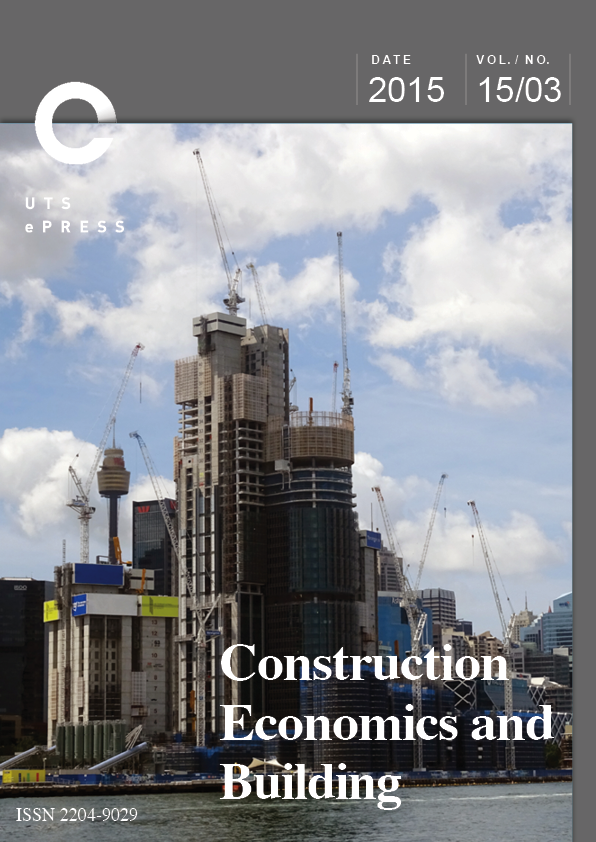Building Information Modelling and Standardised Construction Contracts: a Content Analysis of the GC21 Contract
Main Article Content
Abstract
Building Information Modelling (BIM) is seen as a panacea to many of the ills confronting the Architectural, Engineering and Construction (AEC) sector. In spite of its well documented benefits the widespread integration of BIM into the project lifecycle is yet to occur. One commonly identified barrier to BIM adoption is the perceived legal risks associated with its integration, coupled with the need for implementation in a collaborative environment. Many existing standardised contracts used in the Australian AEC industry were drafted before the emergence of BIM. As BIM continues to become ingrained in the delivery process the shortcomings of these existing contracts have become apparent. This paper reports on a study that reviewed and consolidated the contractual and legal concerns associated with BIM implementation. The findings of the review were used to conduct a qualitative content analysis of the GC21 2nd edition, an Australian standardised construction contract, to identify possible changes to facilitate the implementation of BIM in a collaborative environment. The findings identified a number of changes including the need to adopt a collaborative contract structure with equitable risk and reward mechanisms, recognition of the model as a contract document and the need for standardisation of communication/information exchange.
Article Details

This work is licensed under a Creative Commons Attribution 4.0 International License.
Authors who publish with this journal agree to the following terms:
a) Authors retain copyright and grant the journal right of first publication with the work simultaneously licensed under a Creative Commons Attribution License that allows others to share and adapt the work with an acknowledgement of the work's authorship and initial publication in this journal.
b) Authors are able to enter into separate, additional contractual arrangements for the non-exclusive distribution of the journal's published version of the work (e.g., post it to an institutional repository or publish it in a book), with an acknowledgement of its initial publication in this journal.
c) Authors are permitted and encouraged to post their work online (e.g., in institutional repositories or on their website) prior to and during the submission process, as it can lead to productive exchanges, as well as earlier and greater citation of published work (See The Open Access Citation Advantage Service). Where authors include such a work in an institutional repository or on their website (ie. a copy of a work which has been published in a UTS ePRESS journal, or a pre-print or post-print version of that work), we request that they include a statement that acknowledges the UTS ePRESS publication including the name of the journal, the volume number and a web-link to the journal item.
d) Authors should be aware that the Creative Commons Attribution (CC-BY) License permits readers to share (copy and redistribute the work in any medium or format) and adapt (remix, transform, and build upon the work) for any purpose, even commercially, provided they also give appropriate credit to the work, provide a link to the license, and indicate if changes were made. They may do these things in any reasonable manner, but not in any way that suggests you or your publisher endorses their use.
